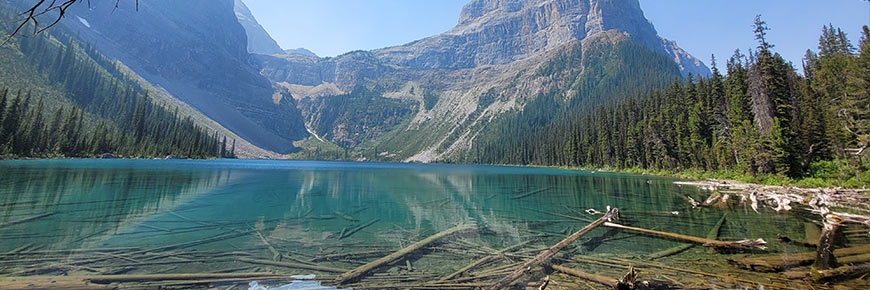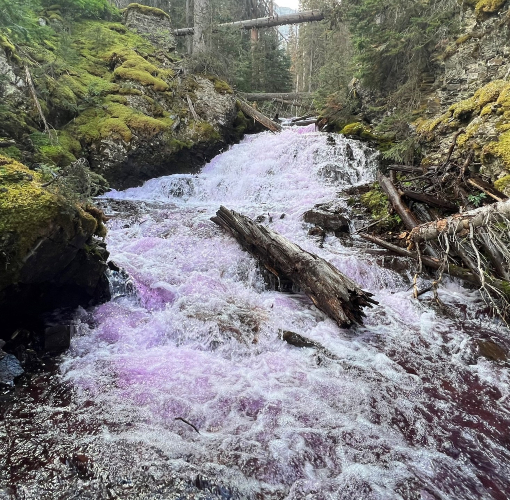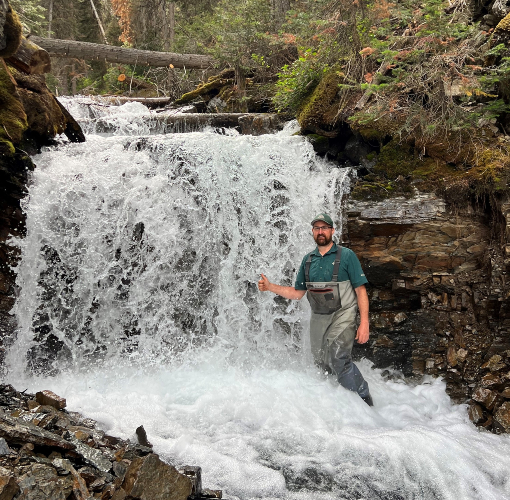
Margaret Lake
Banff National Park
Parks Canada is restoring critical habitat for westslope cutthroat trout in Banff National Park. These fish once lived in abundance in the cold, fresh waters of Margaret Lake. Now, the Alberta population is listed as threatened under the Species at Risk Act.
In the early 1900s Parks Canada began stocking mountain park lakes to satisfy the growing number of visitors wanting to fish. Non-native fish, including brook and rainbow trout, were introduced and flourished, displacing native species. Parks Canada no longer stocks lakes with non-native fish, but these past stocking practices continue to impact the park’s aquatic ecosystems. The westslope cutthroat trout has declined to 10% of its historic range.
The Saving Threatened Trout project is focused on returning westslope cutthroat trout to their historical locations, and Margaret Lake was selected as it was once home to an abundant historical population. Parks Canada is committed to the protection and restoration of healthy aquatic ecosystems in the national parks.
Westslope cutthroat trout are a species at risk for several reasons:- Displacement by non-native fish
- Competition with brook trout for resources
- Hybridization with rainbow and Yellowstone cutthroat trout
- Loss and damage to stream habitat
- Increasing water temperature and other factors related to climate change
Parks Canada‘s four step process to save threatened trout:
1. Identify secure habitat
2021
The Parks Canada aquatics team determined that the outflow stream from Margaret Lake served as an access point for non-native fish in Hector Lake below, during periods of high water. After significant consultation on various barrier construction methods with Montana Fish Wildlife & Parks, United States National Park Service, United States Forest Service and Fisheries and Oceans Canada, a design was selected to ensure a secure habitat for the threatened westslope cutthroat trout. Aquatics staff will enhance the existing cascade using controlled detonations in the fall of 2022.
2022
Following a rotenone application (fish toxicant) in August, Aquatic staff moved forward with a controlled detonation along Margaret Creek to improve a seasonal barrier into a permanent barrier. The controlled detonation created a +2.5m waterfall which will prevent non-native species from returning to Margaret Lake.


2. Remove non-native fish
Non-native brook trout are currently being removed from Margaret Lake using a fish toxicant, rotenone. Two fish toxicant applications were completed in summer of 2022 and fall of 2023. Monitoring will continue in 2024 to determine whether non-native fish have been successfully removed from Margaret Lake. Once identified as successful WSCT will be reintroduced where they were historically present.
3. Reintroduce westslope cutthroat trout
Once monitoring ensures that the removal of all non-native fish in Margaret Lake has been successful and aquatic invertebrate communities have been re-established, the re-introduction of native westslope cutthroat trout will begin.
4. Monitor success
Once westslope cutthroat trout are re-introduced the team will monitor Margaret Lake until it supports a healthy and self-sustaining population of westslope cutthroat trout.
Stay on this journey with Parks Canada as we protect and restore habitat for species at risk.
For more information, contact pc.llykaquatics-aquatiquesllyk.pc@pc.gc.ca
- Date modified :